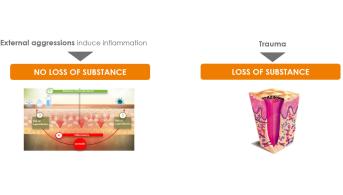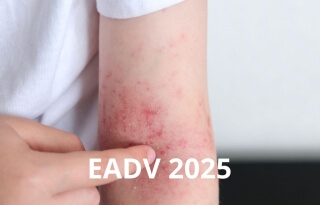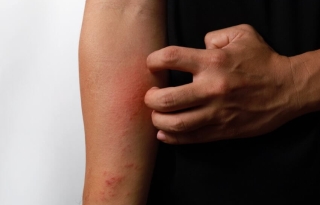Skin lesions and healing
The skin insulates and protects the body from the outside world. When the skin is attacked, its repair process is activated to restore barrier and metabolic functions.
- Read more
-
There are 2 types of skin deterioration:
- Inflammatory deterioration, characterized by inflammation. Skin is damaged and irritated. It is repaired without leaving any marks (dermatitis).
- Traumatic deterioration: skin is damaged, leading to the loss of material (epidermis and/or dermis are affected). The healing process is triggered, but repair is rarely complete, i.e., it rarely will not leave a mark (scarring).
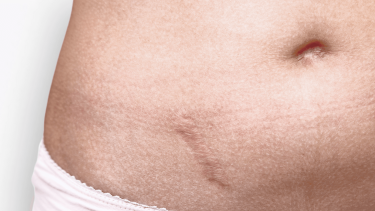
To support your patients
The vascular phase
Its main aim is to stop bleeding, or hemostasis.
It is accompanied by rapid vasoconstriction, which favors hemostasis. Blood leaking from the damaged vessels into the damaged tissue coagulates to form a scab, temporarily isolating the damaged skin tissue from the environment. This can range from a few minutes to a few hours.
The inflammatory phase
The main aim of this phase is to prevent infection, cleanse the wound of cellular debris and prepare for the reconstruction phase. Clinically, the inflammatory reaction is characterized by 5 signs: redness, edema, heat, pain and loss of barrier function.
During inflammation, there is an immediate defense by tissue-resident macrophages, which limit microbial invasion by phagocytosing foreign microbes. Local vasodilation to increase blood flow, largely due to the action of histamines released when mast cells degranulate.
During this inflammatory phase, activated macrophages perform the pro-inflammatory functions of antigen presentation, phagocytosis and production of inflammatory cytokines (IL-1, IL-6, TNFα) and growth factors that accelerate the healing process. They will help initiate the repair phase.
The tissue repair phase
Cytokines, pro-inflammatory mediators, stimulate fibroblasts, collagen production and, more generally, granulation tissue formation.
This is followed by the migration and multiplication of keratinocytes, known as epidermization. During this phase, there is a horizontal movement that corresponds to wound closure, and a vertical movement that consists of dermal reconstruction.
The remodeling phase
Remodeling of the extracellular matrix is achieved through a reduction in the number of fibroblasts, conversion of immature collagen into mature collagen, densification and realignment of mature collagen fibers, and organization of the vascular network.
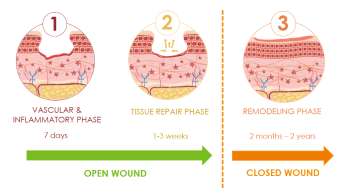
Skin pain
Skin pain is nociceptive pain. This is pain caused by persistent, excessive stimulation of peripheral pain receptors.
Pain transmission is mainly felt upon lesion creation and during the vascular and inflammatory phases of the healing process.
The phenomenon of transduction is the first stage of pain. This involves the creation of the impulse at the pain receptors and transmission into the nerve fiber. Nociceptors are found in keratinocytes and in nerve fibers. The neuron in the keratinocytes receives either a pain-activating or pain-inhibiting signal from neurotransmitters.
The pain signal is transmitted by the spinal cord to different regions of the brain, which have also been associated with pain perception.
The perception of pain appears; this is the ascending pain pathway.
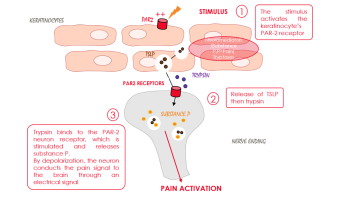
In the news
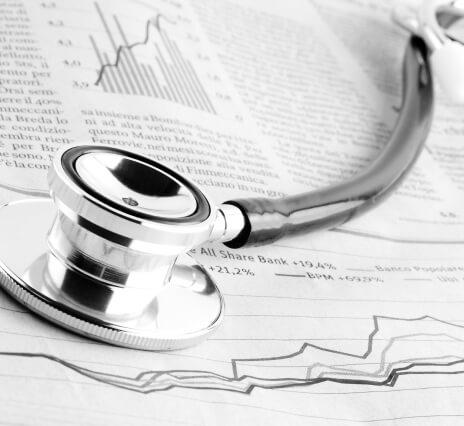
Summaries of publications and clinical results
Find all our summaries by expertise.
View all summariesWant to read on?
This access is reserved for professionals, registered on Pierre Fabre For Med.
To access the full content, please register or log in if you already have an account.
